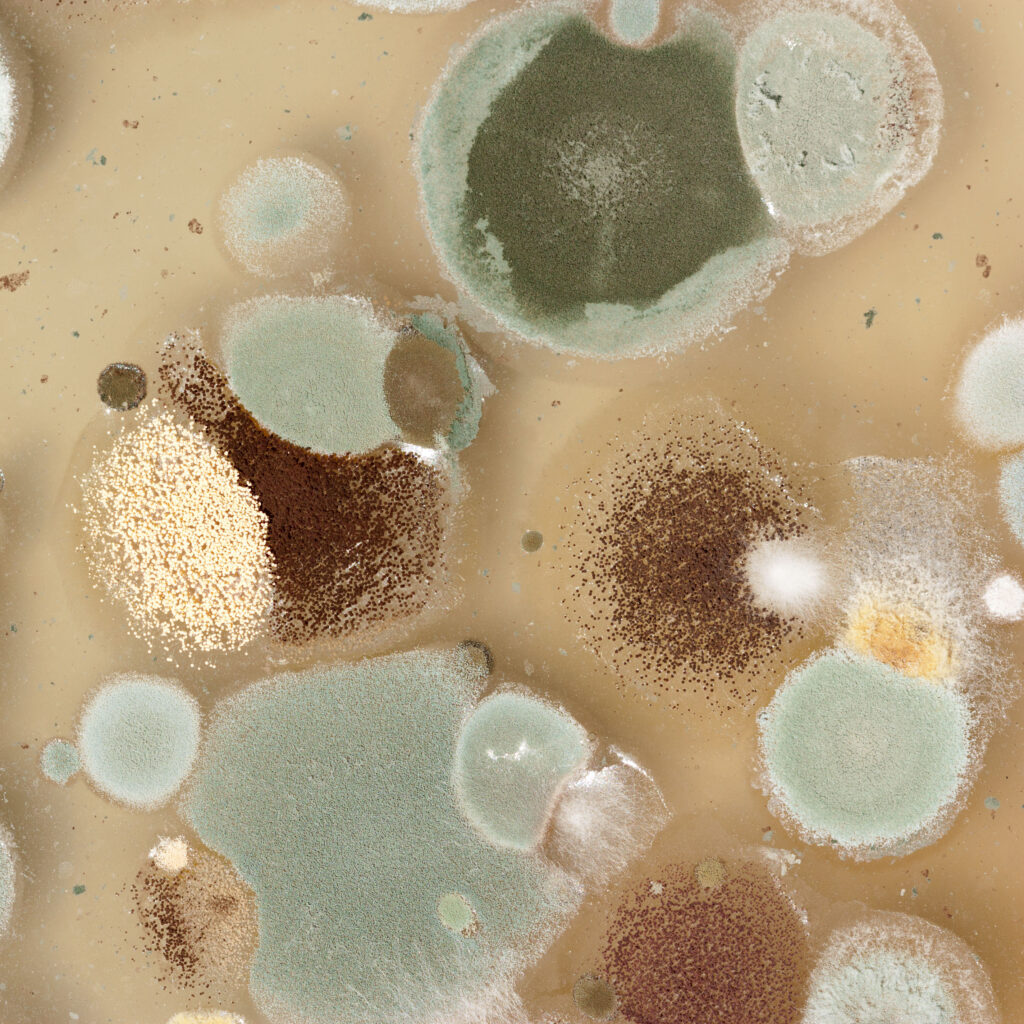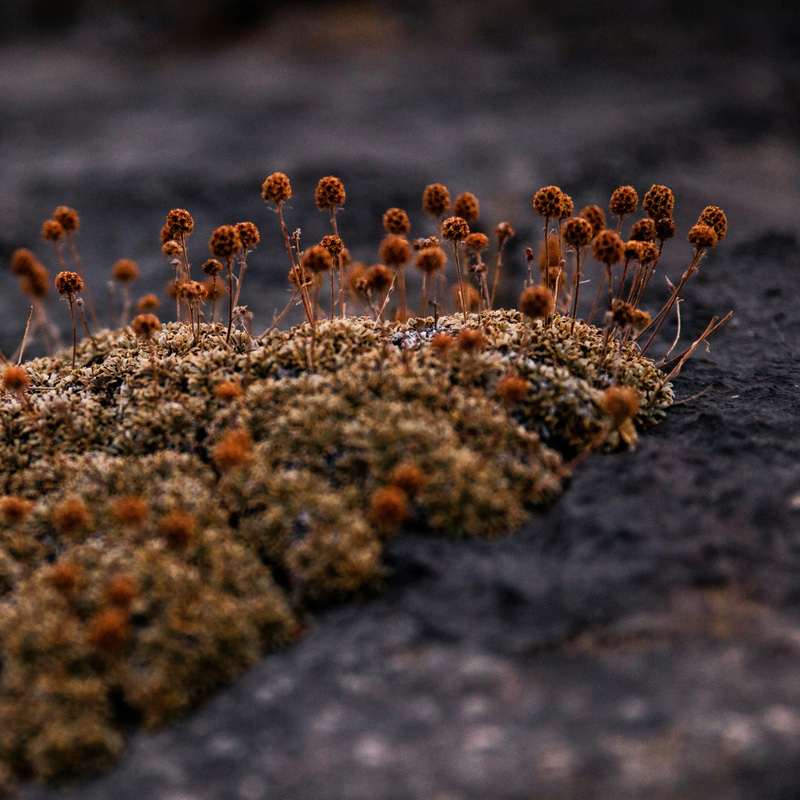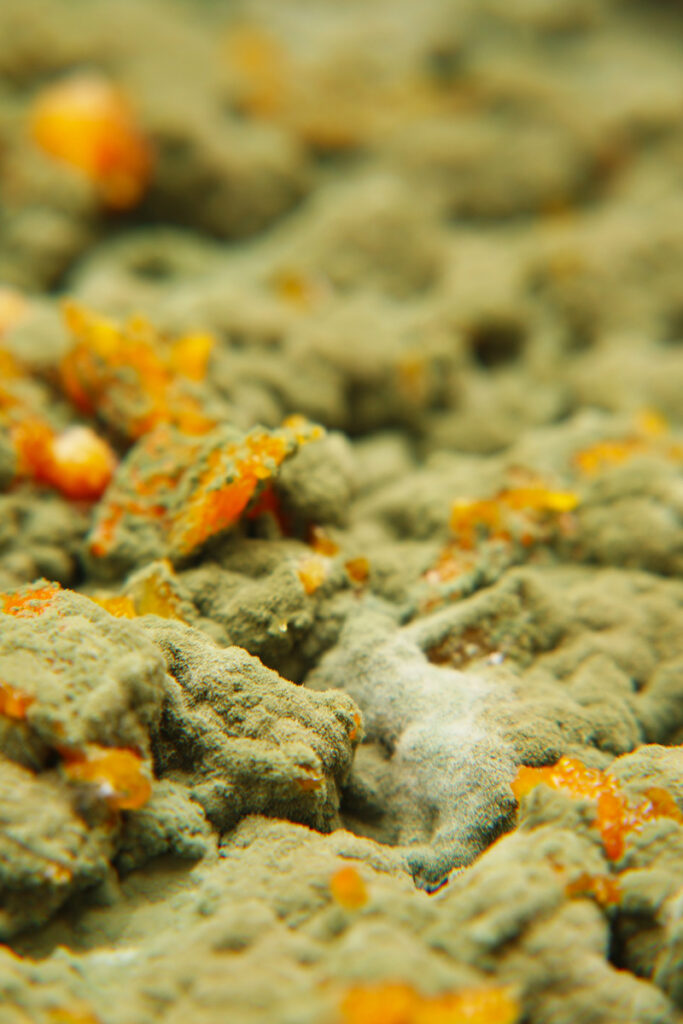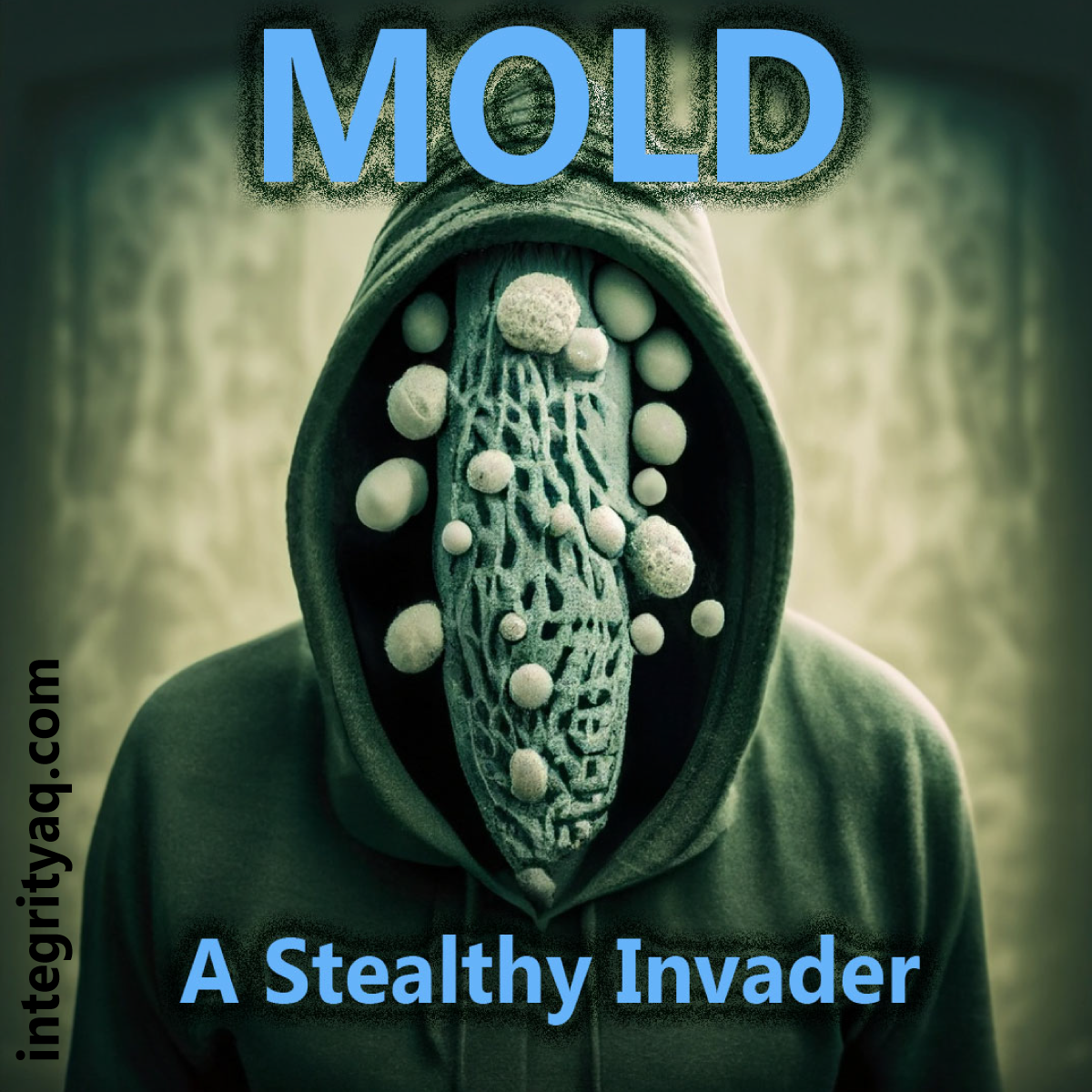
Mold—silent, sneaky, and sometimes sinister.
It lurks in the shadows, evading detection until it’s too late. Finding mold is sometimes tough but we’ll shine a light on the elusive nature of mold, explore some myths, and equip you with the knowledge to combat this stealthy invader.
The EPA gives us 10 Things we Should Know about Mold.
The Challenge of Finding Mold
Mold needs water to grow. When some part of a property gets and stays wet or gets wet repeatedly you’re going to get mold growth and surface mold is the source of the exposure coming from airborne spores. Mold is a master of disguise, often hiding in plain sight. Its microscopic spores can infiltrate the tiniest cracks and crevices waiting for water to show up. That’s where professional mold testing comes into play. Just because there’s a little mildew in the shower does not mean you have a ‘mold problem’. Remember, that tiny spot of mildew in the shower is not getting into your body, airborne mold is your exposure point. By enlisting the help of a certified mold testing company, you can clarify if you’re being exposed within your home or workplace.
Types of Mold: From the Common to the Cryptic
Mold comes in many shapes, sizes, and colors, each with its own unique characteristics. However all mold, regardless of the type, is remediated the same way, so knowing what type of mold is on the wall before remediating it, is unnecessary. Most people have heard of the notorious black mold. Scientifically there is no mold called ‘black mold’, black is a color not a type. The scientific name is Stachybotrys chartarum and the National Center for Disease Control (CDC) say that type is no more dangerous than other common molds and should be remediated. While symptoms may include respiratory issues, skin irritation, and even neurological effects, those same symptoms can come from MANY other illnesses, so be careful not to self diagnose, see a medical professional if you are concerned.
The EPA gives us 10 Things we Should Know about Mold.


What to Do if You Find Mold
So, you’ve discovered mold in your home—now what? First and foremost, don’t panic. While mold can be unsettling, it’s not the end of the world. The next step is to contact a reputable mold test company to assess the extent of the problem. They’ll conduct thorough testing to determine the severity of the mold problem and provide you with information needed by the remediation company.
If mold is detected, don’t attempt to remove it yourself. DIY methods can often do more harm than good, spreading mold spores and exacerbating the problem. Instead, leave remediation to the professionals. There is a science to it, certified mold remediation companies have the knowledge, tools, and experience to safely and effectively eliminate mold from your home, restoring it to a clean and healthy state.
Mold may be elusive, but it’s no match for informed action. By understanding the challenges of finding mold, understanding what knowledge and process is important you can protect yourself and your loved ones from its harmful effects. Don’t let mold take control—take charge with proactive inspection, testing, and remediation measures.
Sadly the internet is full of companies using fear and scare tactics to freak people out of using prudence and common sense.
Ready to take the first step? Schedule an air quality test with Integrity Environmental Testing today. Our technicians will provide real-time results, determining if your home is safe from biological contaminants, including mold and provide expert guidance on next steps.
Get More Articles Like This
Stay in the loop with everything you need to know. We won’t sell your information.




